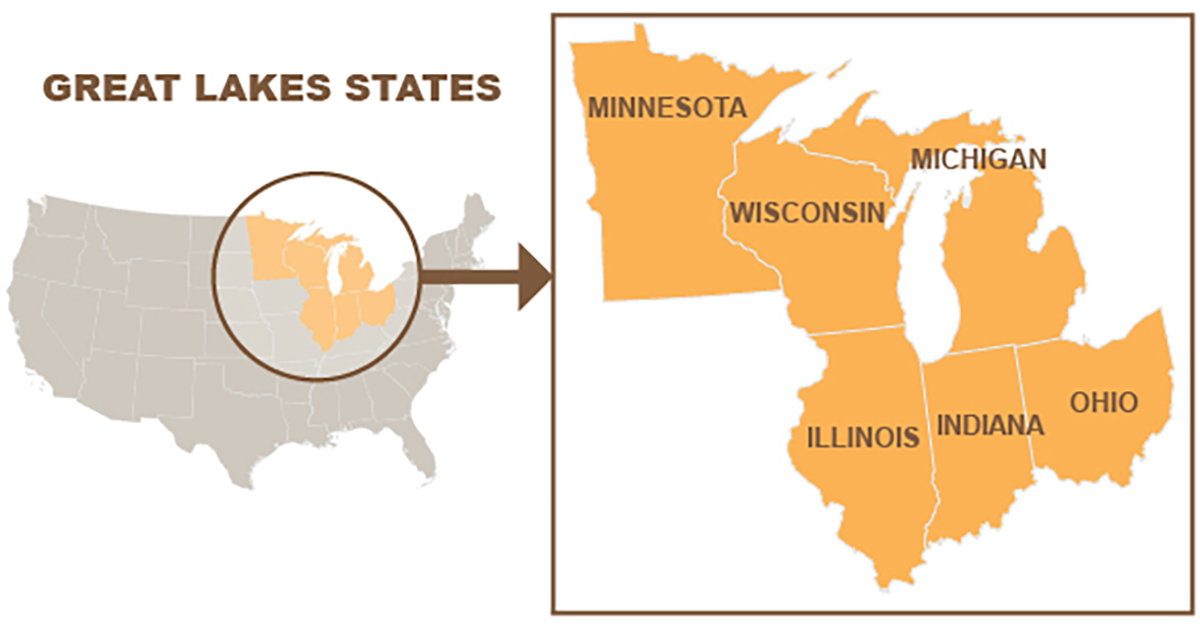Great Lakes College and Careers Pathways Partnership

Overview
Even as employers need skilled workers in order to grow and compete in the global economy, too many young Americans are shut out. Lack of opportunity, the cost of college, and a lingering stigma attached to career and technical education (CTE) prevents high school and community college students from acquiring the education, credentials, and skills they need to get and keep jobs that offer family-supporting wages. Whereas higher education and workforce training were once viewed as separate fields, there is now more focus nationally on programs that aim to prepare students for success in both, by means of “college and career pathways” — or “pathways” for short. States have begun developing clearly articulated pathways systems that start in high school and end in good jobs, integrating career and technical education, rigorous academic course work, employability (or “soft”) skills, and work-based learning. But despite support for this approach in many states and from the federal government, challenges to scaling up and sustaining effective pathways remain.
In early 2015, the Joyce Foundation asked MDRC and Jobs for the Future for assistance in planning an initiative to advance career pathways programs in the Great Lakes states (Minnesota, Wisconsin, Illinois, Indiana, Michigan, and Ohio). As part of that work, MDRC conducted a scan of communities in the Great Lakes region to identify those that had gained traction in pathways design and implementation with districts, postsecondary partners, and local employers, but that would require incremental investment and support if they were to achieve adoption on a greater scale.
Additional Project Details
Agenda, Scope, and Goals
In collaboration with Jobs for the Future, MDRC carried out the following project activities for the Joyce Foundation:
- Interviewed several dozen national and regional stakeholders, particularly in the Great Lakes region, to identify communities that had started pathways development and had the potential to significantly advance their work with a modest level of foundation support
- Based in part on these interviews, developed field protocols to characterize strong pathways at various stages of development and to answer the question, What does a strong pathway look like?
- Visited communities that seemed promising based on phone interviews to further investigate their programs and determine their readiness for this type of investment
- Advised the foundation on how to promote pathways development in the selected communities, identify common implementation problems, and encourage quality, sustainable career pathways systems in Great Lakes states
Design, Sites, and Data Sources
To identify candidate sites, MDRC and Jobs for the Future conducted phone interviews with individuals ranging from national policymakers to county officials and researchers believed to be knowledgeable about pathways models in general, pathways work in the six states in the Great Lakes region (Indiana, Ohio, Illinois, Wisconsin, Minnesota, and Michigan), or pathways work in specific communities in the region.
Teams consisting of staff members from the Joyce Foundation, MDRC, and Jobs for the Future conducted one- to two-day visits to six of the most promising sites in four states (Illinois, Minnesota, Ohio, and Wisconsin). While on site, team members interviewed most of the key players in the pathways program, including the school district(s), high school leaders and teachers, community college administrators, employers and their organizations, workforce agencies, and others. Materials and notes collected during these visits were used to generate site visit reports, which provided the basis for the findings and recommendations delivered to Joyce in a final memo. Four communities were selected for investment by the foundation:
-
Columbus, Ohio
-
Rockford, Illinois
-
Madison, Wisconsin
- Northwest suburbs of Chicago (Districts 211 and 214)





